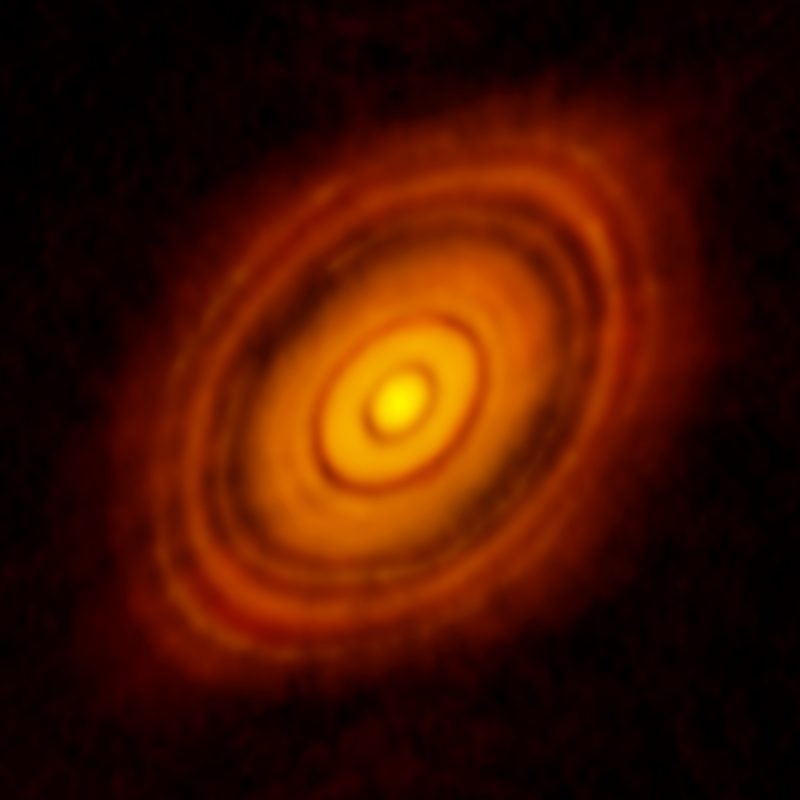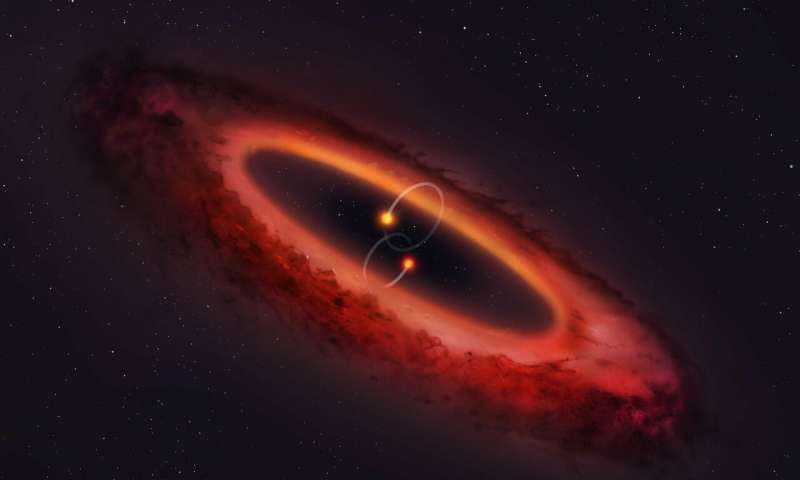what to the planets look like in a flat earth world

EarthSky lunar calendars are absurd! They make great gifts. Guild now. Going fast!
The earliest stargazers noticed that the bright planets in our sky travel along the same path, more than or less, as the sun and moon. We call that sky pathway the zodiac. Today, we know this heaven path – this zodiac – results from the fact that the planets in our solar system orbit our lord's day more than or less in a single aeroplane. Just today we also know thousands of other planets – called exoplanets – orbiting distant stars. Do they also orbit, more or less, in a single aeroplane effectually their suns? If you stood on the surface of an exoplanet (bold it had a solid surface to stand on), would y'all also see that organisation's planets cantankerous the sky in approximately the same path as the local star?
The answer is yes … and no. Go on reading.
Here's the yes function of the answer, beginning with another astronomy definition; the Earth-sun plane is chosen the ecliptic. Most major planets in our solar system stay within 3 degrees of the ecliptic. Mercury is the exception; its orbit is inclined to the ecliptic by seven degrees. The dwarf planet Pluto is a widely known exception to this rule. Its orbit is inclined to the ecliptic past more than 17 degrees.
It makes sense that nearly large planets in our solar system stay most the ecliptic plane. Our solar system is believed to be about 4 1/2 billion years one-time. It's thought to accept arisen from an baggy deject of gas and dust in space. The original cloud was spinning, and this spin acquired information technology to flatten out into a disk shape. The lord's day and planets are believed to have formed out of this disk, which is why, today, the planets withal orbit in a single plane around our dominicus.

According to astronomers, distant stars and planets also form from spinning clouds of gas and grit in space. In recent years, astronomers have captured images of some protoplanetary disks – new solar systems in the process of formation – plus they see distant, already-formed solar systems, whose planets do orbit, equally ours does, more than or less in a single aeroplane.
On these worlds, yes, yous would see planets crossing the sky along a pathway like to our zodiac, the same pathway traveled by the local star.
On the other mitt, it seems, astronomers recently learned that not all planet-forming disks lie in the airplane of their stars' equators, as our solar system'south must have. In early 2019, astronomers announced a newly discovered double star organization where the planetary disk has somehow been kicked upwardly over the expected equatorial aeroplane, and now appears oriented over the plane of the stars' poles.
In that system, both the sky view – and the seasons – would be very dissimilar. Read more: Double star flips planet-forming disk into pole position
So, as always, Nature proves herself to be various and variable.

By the way, information technology'southward one of the wonders of nature that our universe is populated with many sorts of disk-like structures.
Our solar system is i of them. Afar protoplanetary disks and stars already known to have their own distant solar systems are another example. And so is our Milky Way galaxy. And you lot find disks in many other places in infinite – for example, the rings of Saturn and other planets. Writing at Ask An Astronomer, Dave Kornreich offers the physics behind the presence of and so many disks in space:
Rings and disks are common in astronomy. When a cloud collapses, the conservation of angular momentum amplifies any initial tiny spin of the deject. As the cloud spins faster and faster, it collapses into a disk, which is the maximal residue between gravitational collapse and centrifugal force created past rapid spin.
The result is the coplanar planets, the thin disks of spiral galaxies, and the accretion disks effectually black holes.

Bottom line: Considering of the way stars and planets form, most planetary systems likely start out in apartment disks around their stars, orbiting in more or less the same aeroplane as their stars' equators. But we don't know yet what becomes of these disks, and we know at least ane case where a planetary disk has flipped up, to become oriented over its stars' poles.
Source: https://earthsky.org/space/planets-single-plane/
0 Response to "what to the planets look like in a flat earth world"
Postar um comentário